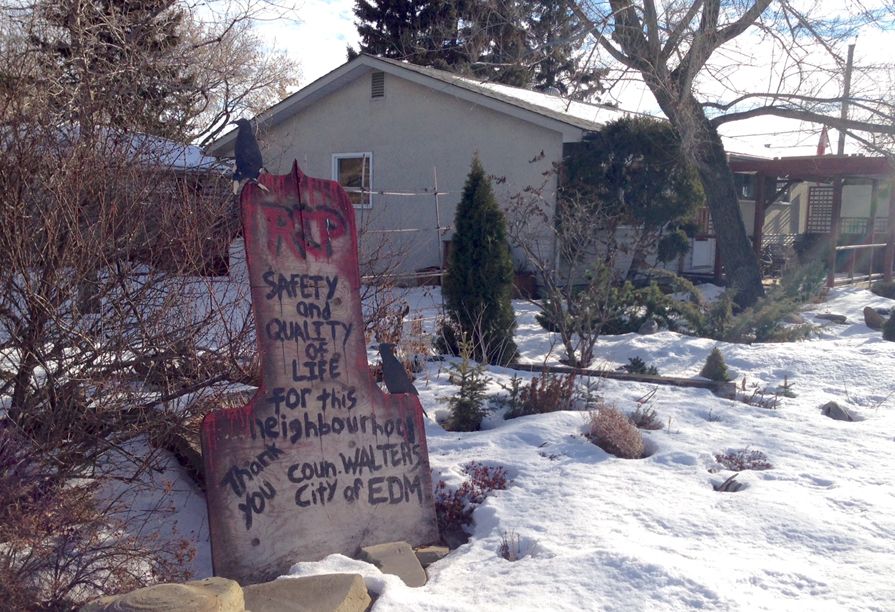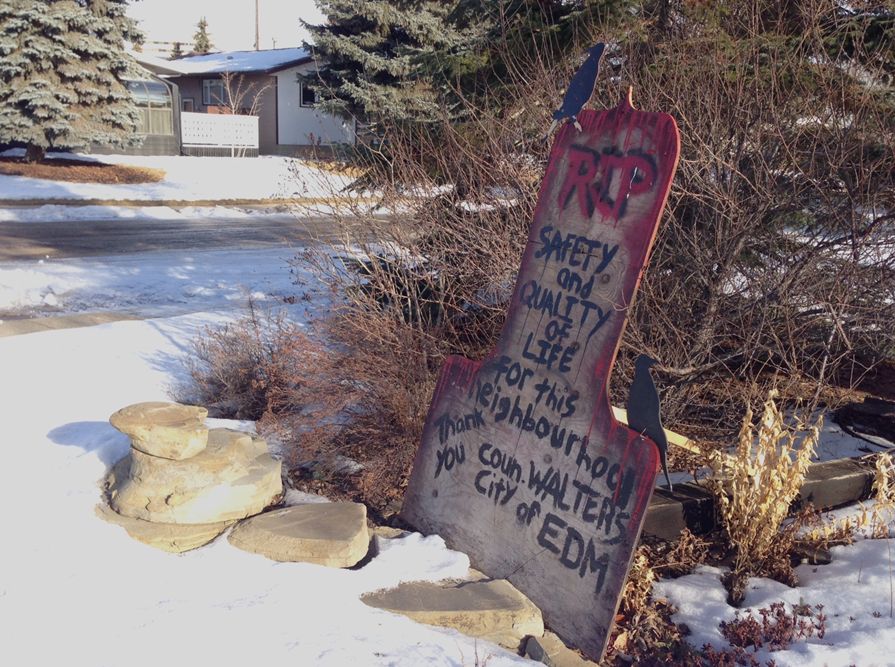It was an attempt to calm traffic, but for one neighbourhood in Edmonton, it flared tempers, and divided a community.

In mid-July, the city made 106 Street between 53 and 56 Avenues one-way, closing access to southbound traffic. The city said the goal was to curb speeding and drivers short-cutting through the residential area.
However, the idea sparked opposition in the community. Some residents said it only pushed traffic to nearby roads and said the plan was implemented without the support of most of the residents. Other people supported the idea and said it should be given time to take effect.
City officials announced Wednesday they would reverse the controversial traffic-calming measures from the Pleasantview area, five months short of a one-year trial period.
Many people in the crowd at that public meeting applauded, but a few booed.
READ MORE: ‘What we’ve tried isn’t working’: Contentious traffic changes in Pleasantview will be reversed
The president of the Pleasantview Community League sent a letter to the editor, blasting the city for going back on the traffic-calming efforts.
“As a community league executive, we oppose the removal of the Pleasantview trial traffic calming measures on 106 and 109 Streets,” Tony Slemko wrote in the Edmonton Journal Thursday.
“In 2013 we were encouraged by then-Councillor Don Iveson to pursue the expression of interest,” he continued. “We are mystified at the decision-making process that saw the measures abandoned in less than six months. Councillor Michael Walters said in his blog on March 27, 2015, ‘In order for measures to really have an impact, we need to see this pilot through for the two years allotted. By following through, we will be able to see the longer term outcomes as drivers adjust to the pilot measures.'”
A telephone survey conducted by the city found 58 per cent of respondents felt traffic safety in the neighbourhood had declined since the measures were put in place. Thirteen per cent said traffic safety had improved. The survey also found 65 per cent of respondents wanted the traffic measures removed while 54 per cent wanted them removed but still wanted speeding to be addressed.
“What we heard was a strong desire to remove trial measures,” the city’s project engineer, Andrew Siggelkow, said. “It was also very clear the community did not want us to tweak the plan and address some of the areas that are receiving increased traffic.”
While the Pleasantview Community League supported the traffic-calming measures, many members in the community didn’t agree.
“It’s been terrible,” resident Bob Behr said. “After this whole boondoggle, we didn’t hear from them. We weren’t represented by them.”
READ MORE: ‘It’s a nightmare’: Pleasantview residents continue to oppose traffic changes
His advice to the city?
“You have to make sure that your community league representatives actually do represent the community.”
“It’s a very small little clique community and they seem to do one thing and the rest of the community is kind of left in the dark,” Behr said.
He said the community league didn’t listen to all residents, especially those on 105 Street.
“Listen to members of the community, not members of these select boards,” Lynn Durbacz added. “Go to the masses of people and you’ll find what they have to say first.”
That’s something one city councillor hopes to do more of in the future.
“Talking to everybody in as effective way as possible… has to be one of our first steps,” Bryan Anderson said. He wants to see bureaucrats take a broader approach to consultation.
“It’s important that you end up having the kind of meetings that allow a wide cross section.”
READ MORE: Traffic pilot projects have some Edmonton residents fuming mad
The community leagues in Edmonton are volunteer driven. They started with a focus on sports and social activities, but have since evolved into politics and advocacy.
But, community league members are not elected officials, so where do their roles end and where to city councillors’ begin?
“Whether you get consensus or not, the role of the leagues is to bring people together,” said Bev Zubot from the Edmonton Federation of Community Leagues.
“We’re giving some guidance to leagues, some ideas on how they can make decisions by going beyond the board without over-burdening those community organizers.”
When it comes to the Pleasantview situation, a member of the Community Traffic Committee said officials should have stood their ground for the duration of the pilot project.
“I think this is where political leadership needs to stand up and be for something,” Stuart Tate said. “There’s always going to be people who don’t want any change whatsoever.”
Tate also said the city should have been more proactive when issues came up.
“The city needing to take ownership and enforcement of bad driving behaviour. That’s got nothing to do with the community league.”
There are 157 community leagues in Edmonton.












Comments